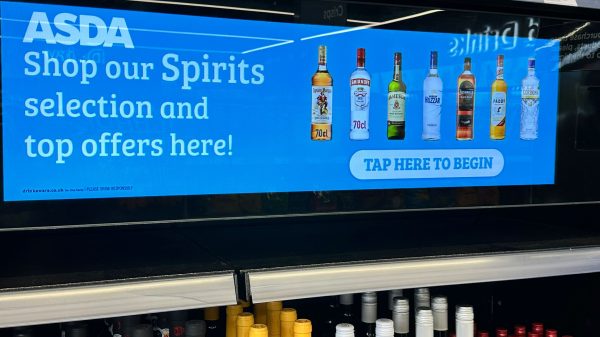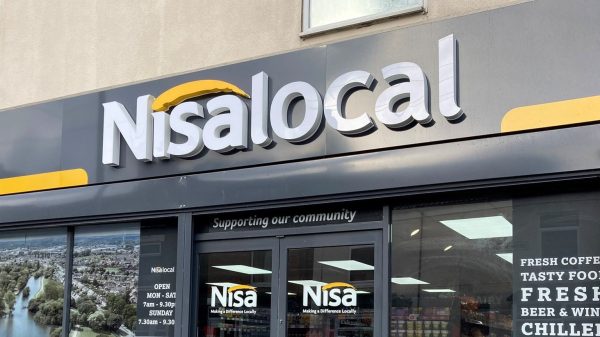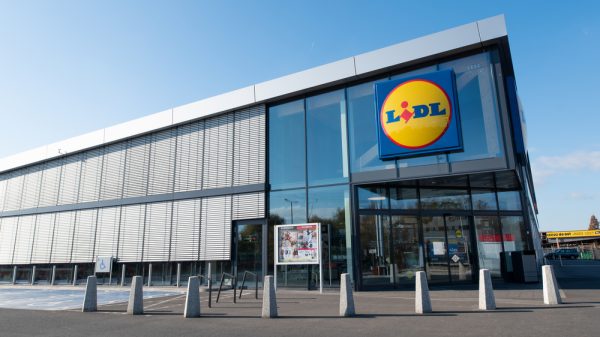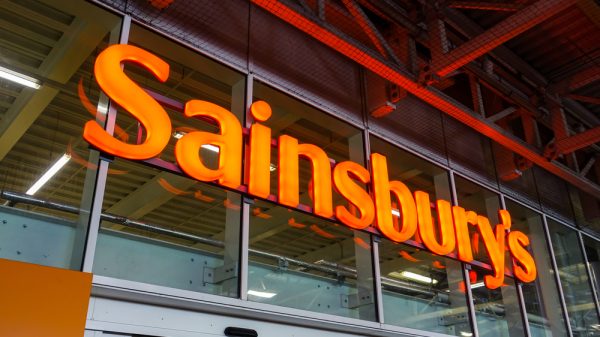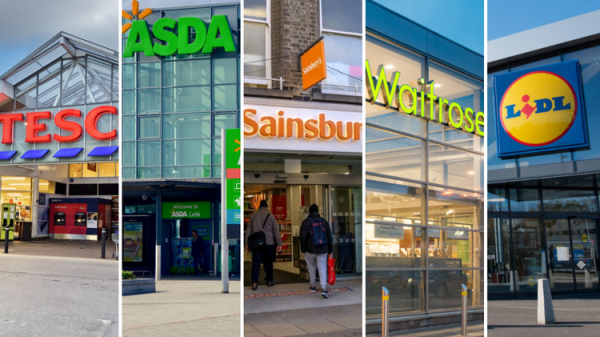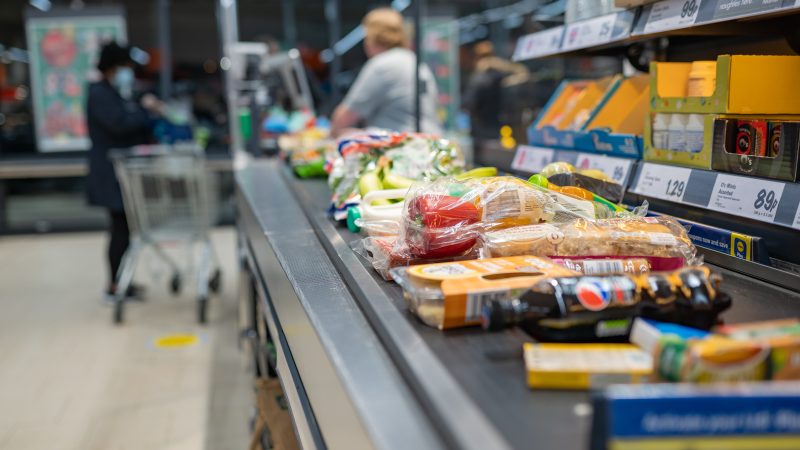For generations, the four supermarkets -Tesco, Sainsbury’s, Asda and Morrisons – have appeared immovable, growing in both consumer appeal and market share. But both Aldi and Lidl are putting up a strong fight, and with the latter edging out Co-op in the the latest Kantar report, the discounters are now sitting in 5th and 6th place, just behind the industry behemoths.
As the saying goes, “What happens when an immovable object meets an unstoppable force?”
When Aldi opened its first store in the UK in 1990, it had ambitious goals to take on the Big 4 supermarkets. The best part of three decades later, the discount retailer is hot on the heels of Morrisons’ place at the table and shows no signs of slowing down.
In fact, Aldi has already edged out Morrisons by market share. It did this first in 2019, when NielsenIQ’s head of retail and business insight Mike Watkins highlighted “consumer spending cautiousness” as the biggest factor to explain the rise in sales at the discounters.
Aldi and Lidl’s combined market share at the time was 16%. It is expected to hit 20% in the next year or so, putting the discounters’ combined efforts in second place between Tesco (26.8%) and well above Sainsbury’s (14.1%), Asda (12.8%) and Morrisons (9%).
The battle for market share
With inflation rates at a 30-year high, Britons are increasingly turning towards discounters as they start to feel the pinch of the rising living costs. As a result, the opportunity is ripe for Aldi and Lidl to grow both sales and market share – consumers haven’t been this focused on tightening their purse strings since the financial crash in 2008.
However, while the discounters are benefitting from additional customers, they are still facing the same supply chain issues and soaring energy bill costs that have been hampering other supermarkets. What’s clear then, is that the consumer shift towards discounters started years before the current inflation crisis.
Talking to Grocery Gazette, NielsenIQ’s head of retail and business insight Mike Watkins agreed, saying: “There has been a structural change in the retail landscape over the last decade. Aldi and Lidl opened new stores, which meant that the market share of the Big 4 fell from 63% in 2013 to 54% at the end of 2021.”
Looking at data trends from Kantar and NielsenIQ, Aldi has been steadily gaining market share for more than a decade now – although its growth slowed down from 2019 to 2020 due to lockdown restrictions.
“The impact was a temporary slowdown in the growth of the market share of the discounters in 2020 but this accelerated again in 2021 as the restrictions were slowly removed,” says Watkins.
“Overall, the impact of the pandemic was that the discounters will hit 20% market share in 2023 rather than 2022.”
The Aldi effect
Alongside its cheap prices and famous ‘middle aisle’, Aldi also has a revered reputation as an organisation. The supermarket recently ranked fifth in The Times’ graduate employers 2022 list, above Google, the BBC and other supermarkets Tesco and Lidl.
According to The Times, the grocer offers “exceptional training and mentorship guides” which draws in some of the UK’s brightest talents as “Aldi continues on an ambitious growth period.”
“Employing the right people is key – without them, it wouldn’t be possible.”
Furthermore, the supermarket recently placed first in the UK for shop floor salaries with new recruits earning £10.10 an hour, which rises to £10.57 after three years of working at the store.
With inflation sky-high, affordable prices and a reputation as a fair employer – not to mention its excellent marketing and social media teams – it’s no surprise that since the lifting of lockdown restrictions, Aldi’s sales have bounced back quicker than any grocer, except Lidl and M&S.
Why supermarkets are price-matching Aldi
Aware of the threat Aldi pose to the UK’s biggest retailers, supermarkets including Sainsbury’s and Tesco have started price matching their products to Aldi in a bid to keep their customers on board.
The supermarket giants shadow the prices of over 200 products, even going as far as to increase an item’s price when the price goes up in Aldi stores.
IPLC UK partner Paul Stainton first noticed the rises at Aldi after monitoring the price of about 70 lines at each retailer since the start of the year. On 22 February this year, a 500ml bottle of Doom Bar Amber Ale was £1.49 at Tesco and £1.59 at Aldi. By 23 February, Tesco had raised its price by 10p to match Aldi’s price.
The supermarket giant is careful not to raise the prices across all of its Aldi priced matchings, sometimes delaying the increase strategically.
“Tesco is trying to put the squeeze on Aldi by not moving many of the key Aldi price match items up, knowing the impact of not moving will be higher on Aldi due to their limited range and inability to manage margin mix between brands and private label,” Stainton told The Grocer.
The Big 4 fight back
Supermarkets, especially the Big 4 grocers, have put their foot on the pedal to accelerate their businesses as the UK comes out of lockdown through price-matching schemes, loyalty schemes and other value-added propositions.
Many have been stepping up their loyalty scheme game with new rewards and enticing discounts; a core tactic to draw customers back from the discounters. Despite flocking towards the discounters as the prices of groceries accelerate, the discounts on offer at other stores may be enough to entice some consumers back.
“Aldi is the only food retailer that doesn’t have some form of loyalty scheme and, in an inflationary environment, I think loyalty is going to become increasingly important for customers,” Shopfloor Insights founder Bryan Roberts told RetailWeek.
Additionally, while other grocers continue their voyage into the home grocery delivery sector, Aldi has done the opposite and put an end to its partnership with Deliveroo.
Aldi told Grocery Gazette, “We have decided to end our trial with Deliveroo to focus on our Click and Collect service, which remains on offer at more than 200 of our stores nationwide.”
The future of the Aldi and the Big 4
Whether or not the Big 4 grocers turn into a Big 3, 5 or even 6, the grocery sector is certainly in for a big shake-up over the next couple of years.
While grocery market share for the Big 4 has been dropping steadily over recent years, Mike Watkins believes that its “unlikely that this trend will continue forever”.
“At some stage there will be a plateau in the market share of discounters as store openings begin to slow down,” he says.
“The dramatic shift to online grocery shopping over the last two years – increasing from 7% to over 12% of all FMCG sales – looks set to continue, and is helping the major supermarkets regain momentum.
“Shoppers also want range, choice, ease of shop and convenience and this is where supermarkets with various store formats from large to small as well as online, which can meet these different shopping missions, now have a competitive advantage.”
It looks likely that Morrisons will be giving up its place at the Big 4 table to Aldi before too soon. However, with the growth of online retail, rapid grocers, loyalty schemes and price matching attempts, overtaking the other three is likely to prove to be a step too far – for now.
Click here to sign up to Grocery Gazette’s free daily email newsletter

